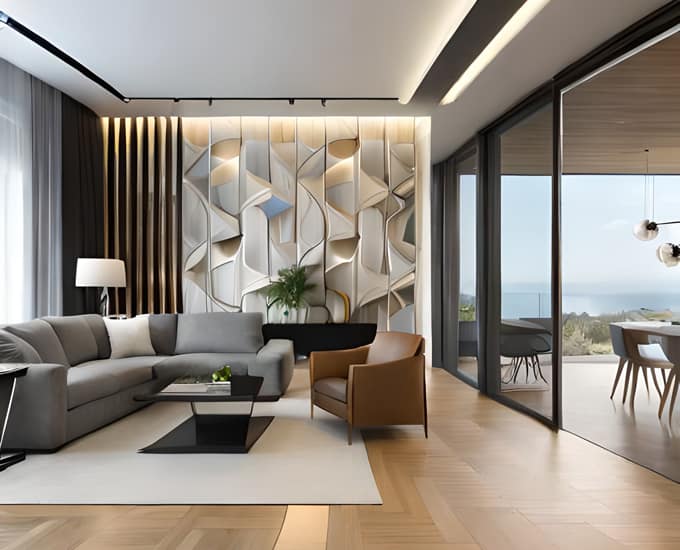Table of Contents
Modern Stone Technology: A Guide for Architects and Contractors
In the world of architecture and construction, the use of stone has a timeless appeal. From the grandeur of ancient monuments like the Pyramids of Giza to the sleek elegance of modern skyscrapers, stone has been a fundamental building material for centuries. However, in today’s fast-paced world, technology has revolutionized the way we work with stone, making it more versatile, sustainable, and awe-inspiring than ever before. In this guide, we’ll explore the latest advancements in modern stone technology, offering architects and contractors valuable insights into how to harness its potential for their projects.
1. Digital Design and Modeling
One of the most significant advancements in modern stone technology is the use of digital design and modeling tools. Architects can now create intricate and complex stone structures with precision and ease. Software programs like AutoCAD and 3D modeling tools allow designers to visualize their ideas in three dimensions, making it easier to plan and execute stone projects. These tools also enable architects to experiment with various stone types, textures, and patterns, ensuring that the final design meets their vision.
2. CNC Machining and Stone Fabrication
Computer Numerical Control (CNC) machining has transformed the way stone is cut and shaped. CNC machines can precisely carve stone to create intricate patterns and designs that were once impossible to achieve by hand. This technology not only increases efficiency but also reduces waste, making stone fabrication more sustainable. Contractors can now deliver high-quality stonework with greater speed and accuracy.
3. Thin Stone Veneer
Thin stone veneer is a game-changer for both aesthetics and sustainability. This technology allows architects and contractors to use a thin layer of natural stone, typically around 1 inch thick, to achieve the look of full-thickness stone. This reduces the weight and cost of stone applications while maintaining the beauty and durability of natural stone. Thin stone veneer is available in various colors and textures, providing endless design possibilities.
4. Sustainable Stone Solutions
As sustainability becomes a top priority in construction, modern stone technology has evolved to meet these demands. Innovative techniques, such as water recycling in stone fabrication, the use of reclaimed stone, and environmentally friendly stone sealers, are helping reduce the environmental impact of stone construction. Architects and contractors can now incorporate these sustainable practices into their projects while preserving the timeless appeal of stone.
5. Smart Stone Installations
The integration of smart technology into stone installations is another exciting development. Architects can incorporate LED lighting, sensors, and even interactive displays into stone surfaces. This not only enhances the aesthetic appeal of stone but also adds functionality and energy efficiency to buildings. Imagine a stone façade that changes color based on the time of day or a stone countertop that can display recipes and nutritional information.
6. 3D Printing with Stone
The advent of 3D printing technology has extended to the world of stone. 3D printers can create intricate stone components with remarkable precision. This technology is particularly useful for crafting custom stone elements for architectural features or artistic sculptures. It opens up new creative possibilities for architects and contractors to push the boundaries of stone design.
7. Stone Restoration and Preservation
Modern stone technology isn’t limited to new construction; it also plays a crucial role in the restoration and preservation of historic stone structures. Advanced cleaning methods, laser scanning, and non-invasive testing techniques are helping architects and contractors restore the beauty and integrity of heritage stone buildings while preserving their historical significance.
Modern stone backsplash
A modern stone backsplash is a stylish and functional addition to any kitchen or bathroom. It combines the timeless beauty of natural stone with contemporary design aesthetics, creating a striking focal point in your space. Whether you’re renovating an existing kitchen or starting from scratch, a modern stone backsplash can transform the entire look and feel of the room. In this article, we’ll explore the key aspects of modern stone backsplashes, including materials, design ideas, and installation tips.
Natural stone tile sealer
Natural stone tile sealer is another example of the utilization of modern stone technology. This sealer is essential for the protection of natural stone tiles against water, oil, and other common household spills. This product creates a protective barrier around the natural stone tiles, ensuring they maintain a clean, polished look.
Modern stone bathrooms
Modern stone bathrooms have revolutionized the face of modern interior design. The unique, modern styling of stone in a bathroom provides a sleek look and a durable surface that is easy to maintain. Modern stone bathrooms are perfect for those seeking a unique, functional, and luxurious environment.
Modern stone cladding
Modern stone cladding is a popular design trend that involves the application of a single layer of stone over another surface. The purpose of modern stone cladding is to create a textured, natural look without the additional weight and cost of a traditional stone wall. Modern stone cladding is perfect for residential and commercial buildings, providing unique and modern exterior designs.
The Modern stone cottage
The Modern stone cottage is a popular choice for those seeking a cozy, warm and inviting atmosphere. The use of modern stone technology in the design of modern stone cottages produces a beautiful and functional space that combines both traditional and modern elements.
Modern stone walls
Modern stone walls have become increasingly popular in modern architectural design. These walls add texture and depth to a room and can be installed in a variety of patterns and styles. The creation of modern stone walls using modern stone technology has increased the popularity of this design trend.
Modern stone sculptures
Modern stone sculptures are another example of modern stone technology being used. Stone sculptures provide an aesthetically pleasing representation of nature and the environment around us. Modern stone sculpture can evoke emotions and create a sense of beauty and wonder in the world around us.
Modern stone dining tables
Modern stone dining tables are perfect for those seeking a unique and modern dining experience. The use of modern stone technology in the design and construction of these tables creates a durable and beautiful surface that is perfect for entertaining.
Modern stone buildings
Modern stone buildings have been on the rise for the past decade. Architects and designers are now incorporating modern stone technology into their designs to create stunning, modern, and sustainable buildings.
modern stone fireplaces
Modern stone fireplaces have become increasingly popular in modern architectural designs. The creation of these fireplaces using modern stone technology provides a unique and functional focal point in any room. The modern stone fireplace can be customized to fit any design style, providing warmth and beauty in any modern living space.
Conclusion
In conclusion, modern stone technology has ushered in a new era of possibilities for architects and contractors. With digital design tools, CNC machining, thin stone veneer, sustainability practices, smart technology integration, 3D printing, and restoration techniques, the potential of stone in construction is boundless. By embracing these advancements, architects and contractors can create structures that are not only visually stunning but also sustainable and technologically advanced, ensuring that stone remains a timeless and relevant building material in the modern world.









